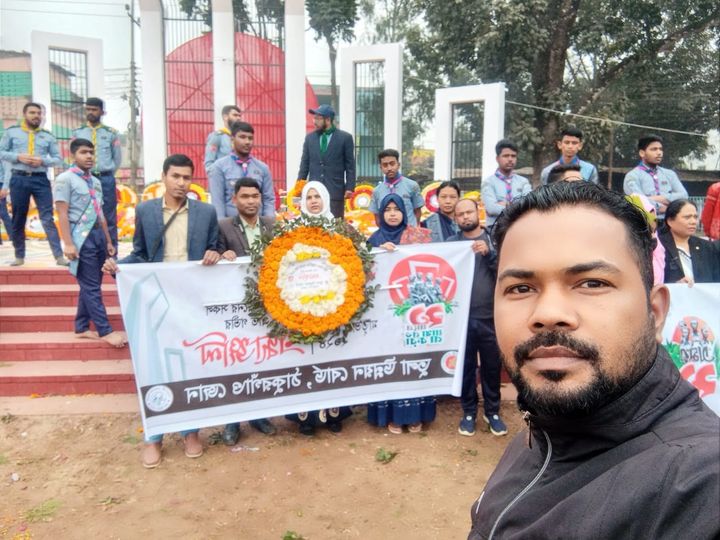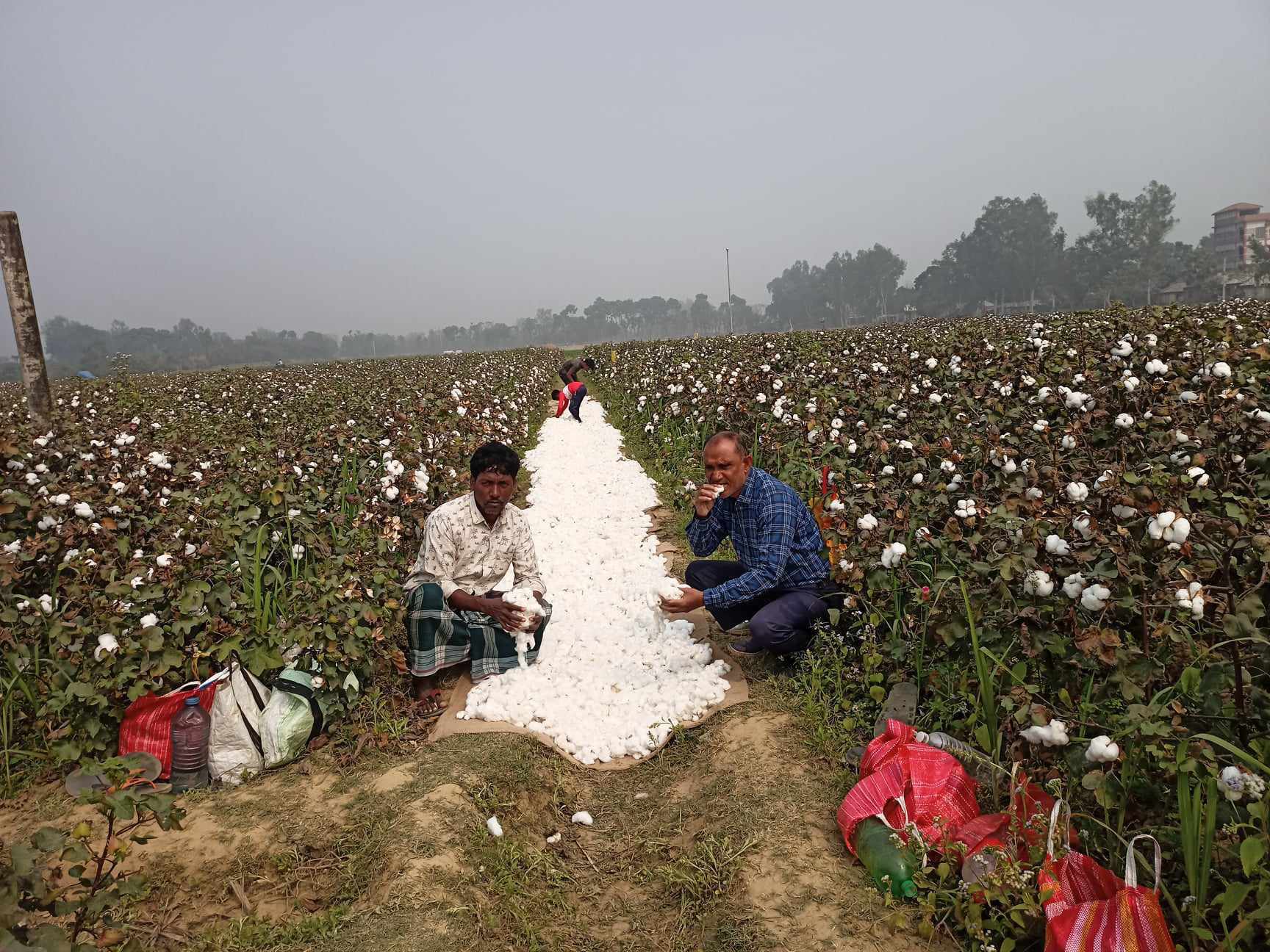-
- about us
-
Our Services
Downloads
Trainin g & Opinion
- e-Services
-
Other Offices
-
Gallery
Photo-Gallery
Video-Gallery
- Contact
- Opinion
-
Form
A companion crop of cotton
The practice of growing two or more additional crops for a short period of time in addition to a main crop on a piece of land is called intercropping and the additional crop is called intercropping. The main objective of intercropping with cotton is to get more profit by growing multiple crops simultaneously on the same land.
Benefits of companion cropping
(1)
Inter-cropping can yield higher total production than mono-cropping and increase total income
(2)
Inter-cropping makes good use of space and time
(3)
If one crop is damaged due to any reason, it is possible to get damaged by another
(4)
It makes full use of natural resources
(5)
Soil erosion and weed infestation are reduced
Companion crop selection
Just as selecting the right companion crop can greatly benefit a grower, selecting the wrong crop is likely to put the grower at a loss. Therefore, the following points should be kept in mind while selecting companion crops:-
(a)
Growth and Maturity of Companion Crops The growth and maturity of the main crop will vary
(b)
Companion crops should not compete with cotton for light, air, water, food and space
(c)
The harmful effects of companion crops should not fall on cotton
(d)
Companion crop management should be similar to that of cotton
(e)
Companion crop pests and diseases should not attack the cotton crop
(f)
Companion crops that can twist and climb cotton plants should not be included
Cultivation of mung and mas along with cotton
Land should be prepared by 2-3 cultivations Mung/Muscalai seeds should be sown in one row between two rows of cotton in July-August. At the time of cotton seed sowing, mung bean seed should be sown at a distance of 7-8 cm. If the sap is less in the land, it is better to soak the cotton seeds in water for 3/4 hours before sowing Note, at the time of sowing, the distance between plants can be kept between 7-8 cm by thinning the seeds in the line and later by planting the seedlings.
Cultivation of trap crops in cotton fields: If crops such as marigolds, corn, arhar, sorghum, beans, sesame, sesame etc. are cultivated in cotton fields, they will act as trap crops for cotton insects, and on the other hand, additional income will be obtained.
Sesame with cotton: Two lines of cotton and one line of sesame can be sown at the same time in the month of Shravana.
Groundnut with cotton: Apply cotton and groundnut together at the end of sravana Between two lines of cotton, two lines of nuts should be placed at a distance of 30 cm: ´ 15 cm:.
Cultivation of vegetables with cotton: After sowing of cotton, short-term vegetables should be sown between the two rows in the month of Shravana. After 7-8 days of sprouting of vegetable seedlings, 5-8 kg of urea fertilizer per bigha should be sprinkled. Vegetable food is suitable within one to one and a half months and should be removed during weaning Red-vegetables, date-vegetables, radish-vegetables, Kalmi-vegetables, coriander leaves can be cultivated as companion crops. In the case of Gima Kalmi, two lines of Gima Kalmi should be placed between two lines of cotton with a distance of 15 cm: ´ 10 cm:. First grafted vegetables can be harvested in 20-25 days After harvesting, 5-8 kg of urea should be sprinkled per bigha In this way the grafted vegetables can be collected about three times Besides, early-40 varieties of Radish, Cucumber, Cabbage, Cauliflower can be grown as companion crops with cotton.
Cultivation system of relay crop with cotton
Cultivation of cotton with ginger/turmeric: Ginger/turmeric should be planted at 90 cm:´20 cm: during Baisakh-Jaishtha month. After that one line of cotton seed between two lines of ginger/turmeric should be sown in dibbling method at 45 cm intervals in the month of Shravan and necessary care should be continued.
Cultivation of cotton with banana: Cotton has recently been grown as a companion crop in banana fields. When the banana seedlings are small and the row to row distance is 6-9 feet, cotton can be produced normally by sowing cotton seeds in the month of Shravan by dibbling method in the open space. But only cotton does well in the first year in a new banana plantation
Cultivation of cotton in new orchards: Cotton cultivation can be done easily in first 2/3 years in new orchards like mango, jackfruit, litchi etc. or orchards of other trees like mahogany etc. Cotton seed can be sown at fixed distances by plowing and harrowing the land between two rows of garden plants. In addition to the care of the garden, additional profit is obtained from cotton
Cultivation of cotton with Chilli: Bari Chilli-1 variety (Bangla Lanka) should be planted at 40 cm:´30 cm: distance between March and mid-April. Then in July-August, 1 row of cotton between two rows of pepper should be sown by dibbling method Pepper plants will die back and good yields are obtained if cotton is cared for properly Farmers in Kushtia region of Jessore are adopting this method
Cultivation of cotton with Aush paddy: If Aush paddy ripens late, to sow the cotton seeds on time, before harvesting Aush paddy, the paddy plants should be divided and lined on both sides. Cotton seeds are sown along these lines by dibbling method After the paddy is harvested, the soil should be loosened with a spade and the necessary care is taken to obtain the expected yield of cotton. Farmers of Pragpur and other units of Kushtia zone are adopting this method
Cultivation of wheat with cotton: Wheat seeds are sown between the cotton crop from mid-November to mid-December During this time 2/1 of the cotton is picked When it rains or after making the land 'Zo' condition by irrigation, between two lines of cotton, the soil is disturbed with a spade and wheat has to be sown. Cotton picking continues as well Wheat seed should be sown at 140 kg/ha Urea half, TSP, MOP, Gypsum 140, 175, 60, 100 kg/ha respectively as basal application for wheat separately. The remaining half of the urea wheat seedlings are 15-20 days old
Planning and Implementation: Cabinet Division, A2I, BCC, DoICT and BASIS



















